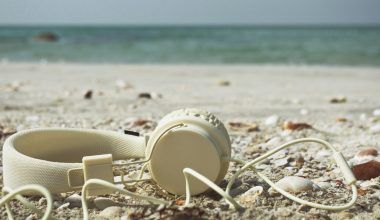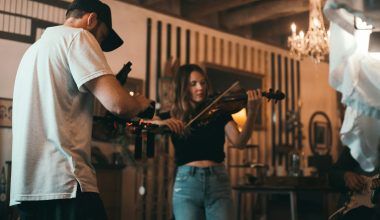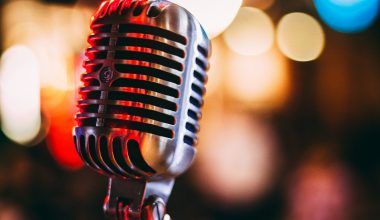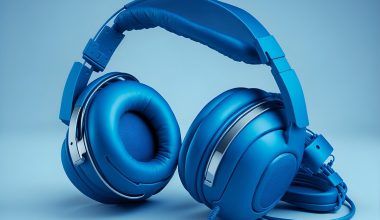Creating a music studio at home might sound expensive, but with the right approach, you can make it affordable and functional. Whether you’re an aspiring musician, a budding producer, or someone who simply loves to experiment with sound, having your own space can make a huge difference. Here’s a step-by-step guide to help you set up a cheap music studio at home without sacrificing quality.
Start by Planning Your Space
Before buying anything, think about where you’ll set up your music studio. Look for a quiet corner or room in your house. A small, unused bedroom, a basement, or even a spacious closet can work wonders. The goal is to have a dedicated spot where you can focus on creating music without distractions.
Keep in mind that smaller spaces are easier to manage acoustically, which is great when you’re on a budget. Plus, having a cozy setup makes it easier to focus on your craft.
Essential Gear for Your Home Music Studio
Setting up a music studio at home doesn’t mean buying every piece of fancy equipment out there. You only need the essentials to get started:
- A Computer or Laptop
Your computer will be the heart of your home studio. If you already have one, that’s great! Focus on optimizing it for music production. Make sure it has decent processing power and enough storage to handle your software and files. If you need to upgrade, look for refurbished options to save money. - A Digital Audio Workstation (DAW)
A DAW is the software you’ll use to record, edit, and mix your music. Popular options include GarageBand (free for Mac users), FL Studio, or Reaper. Reaper, in particular, is affordable and beginner-friendly, making it ideal for a cheap music studio at home. - An Audio Interface
This device connects your instruments and microphone to your computer. For a budget-friendly option, look into brands like Focusrite Scarlett or Behringer UMC series. - Microphones
Start with a versatile and affordable microphone like the Audio-Technica AT2020 or Shure SM57. These mics work well for vocals and instruments. - Studio Headphones
Invest in a good pair of studio headphones. They’re crucial for mixing and recording without disturbing others. The Audio-Technica ATH-M40x or Samson SR850 are excellent budget-friendly choices.
Setting Up Acoustics on a Budget
Good acoustics can make or break your home music studio. Luckily, you don’t need expensive panels to improve sound quality. Here’s how you can optimize your space without spending too much:
- Use Furniture to Absorb Sound: Bookshelves, couches, and thick curtains can reduce echoes and make your recordings sound better.
- DIY Acoustic Panels: You can create your own soundproofing panels using wood frames, insulation material, and fabric. It’s a fun and cost-effective project.
- Rugs and Carpets: Placing rugs on the floor can help absorb sound and reduce noise bouncing around your studio.
Choosing Instruments and Accessories
Depending on your style, you might need specific instruments. If you’re a guitarist, ensure your setup includes an amp or a direct interface for recording. Keyboard players can opt for MIDI controllers, which are affordable and versatile for producing music.
Additionally, stock up on cables, pop filters, and mic stands. These accessories are inexpensive but make your music studio functional and professional.
Lighting and Comfort Matter Too
While focusing on gear is important, don’t forget about making your studio a comfortable and inspiring place. Add some warm lighting, a comfortable chair, and maybe a few personal touches like posters or plants. When your space feels inviting, you’ll find it easier to stay motivated and creative.
Saving Money with Secondhand Gear
One of the best ways to stick to your budget is by buying secondhand equipment. Check out local marketplaces, music forums, or dedicated websites like Reverb. Often, you can find high-quality gear at a fraction of the price.
Software Plugins and Virtual Instruments
Free plugins and virtual instruments are lifesavers for musicians on a budget. Websites like Splice, Plugin Boutique, and Native Instruments offer free or affordable options that sound great. Experiment with these to expand your sound library without spending a fortune.
Organization is Key
A clutter-free studio is a productive studio. Use cable organizers, storage bins, and wall hooks to keep your gear neat and accessible. This not only saves time but also protects your equipment from damage.
Learning and Growing in Your Studio
Your home studio is an evolving space. As you grow as a musician, you can upgrade your gear and experiment with new techniques. In the meantime, focus on learning and making the most of what you have. There are countless free tutorials and courses online that can teach you how to use your setup effectively.
Wrap-Up: Enjoy the Journey
Setting up a cheap music studio at home is a journey, not a race. Start small, get creative, and enjoy the process of building a space where your music can thrive. Remember, it’s not about having the fanciest equipment—it’s about making the most of what you have and letting your creativity shine.
Now that you have a roadmap, it’s time to roll up your sleeves and get started. Your dream of having a home music studio is closer than you think, and you don’t need a big budget to make it happen.
For further reading, explore these related articles:
- Exploring Rihanna’s Amazing Songs and Musical Journey
- How to Create the Best Original Song: A Simple Guide for Musicians
For additional resources on music marketing and distribution, visit Deliver My Tune.






